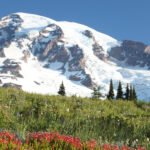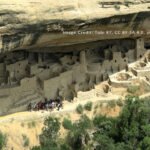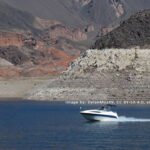Discover everything you need to know about Big Bend National Park, Texas. From its rich history and diverse wildlife to top attractions and tips for visitors, explore why this desert gem is a must-visit.
Table of Contents
Introduction to Big Bend National Park
Nestled in the remote southwestern corner of Texas, Big Bend National Park is a stunning desert landscape that captivates visitors with its rugged beauty and vast wilderness. Covering over 800,000 acres, this national park offers a diverse array of natural features, including majestic mountains, expansive deserts, and the serene Rio Grande River. Whether you’re an avid hiker, a nature enthusiast, or simply seeking solitude in a picturesque setting, Big Bend has something for everyone.
History and Background
Big Bend National Park’s history is as rich and varied as its landscape. The area has been inhabited for thousands of years, with evidence of Native American tribes such as the Chisos, Apache, and Comanche. Spanish explorers and settlers later traversed the region, leaving behind a blend of cultural influences. The park itself was established in 1944, named after the prominent bend in the Rio Grande River that defines its boundary. Today, it stands as a testament to the efforts of conservationists and the dedication to preserving America’s natural heritage.
Biodiversity
Big Bend is a biodiversity hotspot, home to an extraordinary range of plant and animal species. The park boasts more than 1,200 plant species, including desert shrubs, cacti, and the rare Big Bend bluebonnet. Wildlife enthusiasts can spot over 450 species of birds, such as roadrunners, peregrine falcons, and Mexican jays. Mammals like black bears, javelinas, and mountain lions roam the terrain, while numerous reptiles and amphibians add to the park’s ecological diversity. This rich biodiversity makes Big Bend a prime location for wildlife observation and study.
Famous Attractions
Big Bend National Park is dotted with must-see attractions that showcase its unique beauty. The Chisos Basin, nestled in the heart of the Chisos Mountains, offers breathtaking views and numerous hiking trails. The Santa Elena Canyon, with its towering limestone cliffs and the Rio Grande flowing below, is a sight to behold. The Hot Springs Historic District provides a glimpse into the past, where visitors can soak in natural hot springs while exploring ancient pictographs and early 20th-century ruins. These iconic spots are just a few highlights that await visitors in Big Bend.
Activities
Outdoor enthusiasts will find no shortage of activities to enjoy in Big Bend National Park. Hiking is a popular pastime, with trails ranging from easy walks to challenging backcountry treks. The Lost Mine Trail and the South Rim Trail are particularly beloved for their scenic vistas. For those who prefer water activities, the Rio Grande offers opportunities for kayaking, canoeing, and fishing. Bird watching, stargazing, and photography are other popular pursuits, thanks to the park’s diverse ecosystems and clear, dark skies.
Accommodations
Visitors to Big Bend have several accommodation options to choose from. The Chisos Mountains Lodge, the only lodging within the park, provides comfortable rooms and cottages with stunning mountain views. There are also numerous campgrounds, including the popular Chisos Basin Campground, Rio Grande Village Campground, and Cottonwood Campground, catering to both tent and RV campers. For those seeking more rustic experiences, backcountry camping is available with proper permits, allowing adventurers to immerse themselves fully in the wilderness.
Weather Conditions
Big Bend’s weather can be quite variable, so it’s important to plan accordingly. Summers are typically hot, with temperatures often exceeding 100°F (38°C) in the lower elevations. Winters are generally mild, but temperatures can drop significantly, especially at higher altitudes. Spring and fall offer the most pleasant conditions, with moderate temperatures and less extreme weather. Given the park’s arid climate, visitors should always be prepared for sudden changes and carry ample water, sun protection, and appropriate clothing for both hot and cold conditions.
Tips for Visiting
When planning a visit to Big Bend National Park, consider these tips to ensure a safe and enjoyable experience. Always check weather conditions before heading out and be prepared for rapid changes. Bring plenty of water, snacks, and sun protection, especially if you plan to hike. Maps and navigation tools are essential, as cell service is limited. Respect wildlife and keep a safe distance from animals. Finally, familiarize yourself with the park’s regulations and guidelines to help preserve its natural beauty for future generations.
Visitor Information
Big Bend National Park is open year-round, but certain seasons may offer more favorable conditions for different activities. The park entrance fee is $30 per vehicle, valid for seven days. Annual passes are also available. The Panther Junction Visitor Center serves as the main hub for information, permits, and educational exhibits. Additional visitor centers at Chisos Basin, Persimmon Gap, and Rio Grande Village provide further resources and guidance. For more details, visit the official National Park Service website.
Conservation Efforts
Conservation is a cornerstone of Big Bend National Park’s mission. The park works tirelessly to protect its diverse ecosystems and cultural heritage. Efforts include habitat restoration, invasive species management, and wildlife monitoring. The park also collaborates with international partners to safeguard the shared resources of the Rio Grande. Visitors can contribute to conservation by following Leave No Trace principles, participating in volunteer programs, and supporting park initiatives. Through these collective efforts, Big Bend continues to thrive as a haven for nature and history.
For more information about Big Bend National Park, Click here to visit the official National Park Service website.
Big Bend National Park is a treasure trove of natural wonders, cultural history, and outdoor adventures. Whether you’re exploring its diverse landscapes, immersing yourself in its rich biodiversity, or simply enjoying the tranquility of the desert, Big Bend offers an unforgettable experience. By understanding the park’s unique features and preparing for your visit, you can make the most of your time in this remarkable Texas oasis. Remember to respect the park’s environment and contribute to its conservation, ensuring that future generations can also enjoy the beauty and splendor of Big Bend.
You may also like DISCOVER BLACK CANYON OF THE GUNNISON NATIONAL PARK, COLORADO: A COMPREHENSIVE GUIDE








I am really inspired with your writing talents and also with the format on your blog. Is that this a paid theme or did you modify it your self? Anyway stay up the excellent high quality writing, it’s uncommon to see a nice weblog like this one nowadays!